Software plays an increasingly vital role in conservation, helping to protect and manage biodiversity through innovative technological solutions. It also facilitates collaboration among researchers, local communities, and governments, empowering them to develop sustainable conservation strategies. However, many of us working in conservation tech don't have the benefit of a large team of software experts to collaborate with or bounce ideas off of. We aim to change that.
This group is for anyone interested in applying software to conservation and wildlife research. Whether you're a developer eager to contribute to conservation or a newbie with valuable data and ideas but limited software experience, this group connects people with diverse expertise. It provides a space for asking questions, sharing resources, and staying informed about new technologies and best practices. We are also committed to supporting technologists and conservationists from the Global South, ensuring that everyone has access to the tools, knowledge, and opportunities to contribute meaningfully.
Our goal is to foster collaboration and avoid "reinventing the wheel" by sharing solutions, whether it's an application, design approach, or a simple script. We also aim to lower barriers to entry by offering mentorship and guidance and providing feedback on technical ideas. This supportive community is a place to learn, connect, and contribute to the advancement of conservation through software. Whether you're looking for software and mobile app developers to help you with your conservation tech needs, have questions about development, are looking for resources, or would like to share your own app, software, or gaming tools, this is the group for you!
Resources
Header photo: Trevor Hebert
Group curators
Wildlife Protection Solutions (WPS)
Software Engineer in Conservation Tech



- 2 Resources
- 15 Discussions
- 10 Groups
Wildlife Protection Solutions (WPS)
Director of Technology at Wildlife Protection Solutions. Primarily focuses on leveraging machine learning and advanced data analytics to combat poaching, monitor biodiversity, and predict environmental threats.
- 0 Resources
- 1 Discussions
- 5 Groups
No showcases have been added to this group yet.
- @Mauricio_Akmentins
- | he/him
National Scientific and Technical Research Council of Argentina (CONICET)
Researcher and conservationist, focused on the conservation of the endemic and threatened amphibian species of Andean ecoregions of NW Argentina.

- 1 Resources
- 3 Discussions
- 6 Groups
Software Engineer, Web Developer, Tech Enthusiast. I am software engineer with a background in instrumentation, primarily developing using C/C ++. Skilled in web development, with a Grad Cert in Web Development. Enjoy experimenting with tech, e.g. Raspberry Pi, Arduino and IoT.
- 0 Resources
- 0 Discussions
- 7 Groups
- @Jmortensen
- | he/him
I am a software engineering student making a career pivot from hands-on habitat conservation.
- 0 Resources
- 0 Discussions
- 4 Groups
Research software engineer working in computer vision for animal behaviour
- 1 Resources
- 1 Discussions
- 13 Groups
- @ppalencia
- | Dr
I am Pablo Palencia, a postdoctoral researcher at Biodiversity Research Institute (IMIB). I am interested on develop and fine-tuning cutting-edge tools for wildlife management and conservation, wit a special mention of camera trapping ;)
- 0 Resources
- 0 Discussions
- 7 Groups
Natural Solutions
Computational ecologist - Engineer at Natural Solutions (France)



- 0 Resources
- 1 Discussions
- 13 Groups
- @Lucille
- | She/Her
La Trobe University
Marine bioacoustician and elasmobranch scientist
- 1 Resources
- 9 Discussions
- 8 Groups
- @Lindakim
- | She
I am a GIS analyst in the field of conservation
- 0 Resources
- 1 Discussions
- 9 Groups
- @jenniferyu_viewdvm
- | she/her
WHIS Project Manager, Veterinary Initiative for Endangered Wildlife

- 0 Resources
- 2 Discussions
- 5 Groups
Gui
- 0 Resources
- 0 Discussions
- 7 Groups
Liverpool John Moores University
Sensors, remote sensing, embedded systems, Drones
- 0 Resources
- 1 Discussions
- 7 Groups
Wildlife Drones
Wildlife Drones has developed the world’s most innovative radio animal-tracking system using drones so you can track your radio-tagged animals like never before.


- 18 Resources
- 8 Discussions
- 31 Groups
In this From the Field interview, we speak to Dr. Raman Sukumar, a world renowned expert on Asian elephant conservation. He shares his thoughts on how technology could be used for mitigating elephant-human conflict, and...
5 April 2017
Are you ready for this year's #Tech4Wildlife Photo Challenge? In anticipation, we're counting down our ten favourite entries from last year. Do you think you can top these?
1 March 2017
The Conservation Leadership Programme (CLP) is a training and capacity building programme that targets individuals from developing countries who are early in their conservation career and demonstrate leadership...
21 November 2016
Technology by itself will not save pangolins or elephants, but it can help make major progress.
14 November 2016
Do you work on conserving Neotropical migratory birds? Do you need funding? Why not apply for a grant from the U.S. Fish and Wildlife Service through the Neotropical Migratory Bird Conservation Act's grant program? The...
8 November 2016
As a visiting research scholar with UNODC, Isla Duporge asked wildlife crime experts about their experiences using remote sensing technologies to combat illicit wildlife and forest activities. In this article, Isla...
7 November 2016
The Independent Evaluation Office of the Global Environment Facility is requesting Expressions of Interest from individual consultants to conduct remote sensing and geospatial analysis for Evaluation of Programmatic...
4 August 2016
The Sustainable Palm Oil Transparency Toolkit (SPOTT) is an online platform providing practical information for stakeholders in the palm oil supply chain. Alexis Hatto from the Zoological Society of London (ZSL) shows...
8 June 2016
Operating the largest tropical forest camera trap network globally, TEAM Network has accumulated over 2.6 million images. How can large datasets coupled with new techniques for data management and analysis provide...
28 April 2016
A team of researchers is using UAVs to photograph tropical forest canopy with the aim of developing low-cost methods for measuring forest quality and directing restoration management. In this case study for the Drones...
27 April 2016
Thousands of papers and reports about flora and fauna are published each year. While peer-reviewed published information is vitally important to conservation organisations, the ever-increasing mountain of information...
5 April 2016
SMART combines a ranger-based data collection tool with capacity building and a suite of best practices aimed at helping protected area and wildlife managers better monitor, evaluate and adaptively manage their...
15 March 2016
August 2025
November 2025
event
July 2024
event
June 2024
48 Products
Recently updated products
| Description | Activity | Replies | Groups | Updated |
|---|---|---|---|---|
| Hello Eugene, I just tried your service:Was wondering how possible will it be to have the option to upload a second image and have a comparison running to let the user know if... |
|
AI for Conservation, Camera Traps, Data management and processing tools, Software Development | 6 days 1 hour ago | |
| Hi Elsa, We have used InVEST for a pollinator project we supported (the crop pollination model - details here), and looking to using it more for marine and coastal... |
|
Geospatial, Software Development, Climate Change, Funding and Finance, Marine Conservation, Open Source Solutions | 6 days ago | |
| Hello.I am in need of assistance.I need a website for a project I am working on.Thanks 😊 |
|
Software Development, AI for Conservation | 2 weeks 2 days ago | |
| Hi Josept! Thank you for sharing your experience! This types of feedback are important for the community to know about when choosing what tech to use for their work. Would you be... |
|
Acoustics, Latin America Community, Software Development | 2 weeks 6 days ago | |
| Do you know a nonprofit or organization that is looking to work with students passionate about the environment? Code the Change... |
|
AI for Conservation, Citizen Science, Conservation Tech Training and Education, Open Source Solutions, Software Development | 1 month 1 week ago | |
| Thank you for your reply, ChadI meant 10 as a whole, indeed. Perhaps you see your post in one group, but since it is tagged for all groups, I assumed you meant 10 in total.In your... |
|
Acoustics, AI for Conservation, Animal Movement, Camera Traps, Citizen Science, Climate Change, Community Base, Connectivity, Drones, eDNA & Genomics, Emerging Tech, Funding and Finance, Geospatial, Human-Wildlife Coexistence, Software Development, Wildlife Crime | 1 month 3 weeks ago | |
| I would love to hear updates on this if you have a mailing list or list of intersted parties! |
|
AI for Conservation, Community Base, Drones, Latin America Community, Marine Conservation, Open Source Solutions, Software Development | 2 months ago | |
| Hi Jeremy,I am copying here a reply from Juliane Röder, who is not on the forum here: The GFBio VAT tool seems to do all the desired analysing and visualising stuff - but it... |
+32
|
Data management and processing tools, Camera Traps, Software Development | 2 months ago | |
| I'm excited to see this project begin; I think its focus on versatility and functionality for users in diverse environments will allow Trapper Keeper to have a broad impact,... |
|
Camera Traps, Data management and processing tools, Emerging Tech, Open Source Solutions, Software Development | 2 months 1 week ago | |
| Ritika, All the best! I hope someone provides a more substantive answer! I have also graduated with masters in AI and ML recently. Difference being I am at the end of my... |
|
AI for Conservation, Software Development | 3 months 3 weeks ago | |
| The application deadline for the AniMove Workshop 2025 in Costa Rica is the 31st of May 2025. Hurry and sign up here |
|
Animal Movement, Conservation Tech Training and Education, Data management and processing tools, Geospatial, Software Development | 2 months 2 weeks ago | |
| Hi Ryan, hmm, I had no idea there was a microphone named that. I thought about how it’s used to lure birds for netting, and I like Greek Mythology. I thought it was a perfect fit... |
|
Acoustics, Emerging Tech, Funding and Finance, Protected Area Management Tools, Software Development | 4 months 1 week ago |
ICEI2020: 11th International Conference on Ecological Informatics
 ICEI 2020
ICEI 2020
14 February 2020 12:00am
Animove Summer School 2020
 AniMove
AniMove
13 February 2020 12:00am
Seafood fund seeks ideas for innovation projects up to £250k
11 February 2020 12:00am
WILDLABS Virtual Meetup Recording: Acoustic Monitoring
5 February 2020 12:00am
OpenSource Drag and Drop Windows 10 software builder
27 August 2019 9:32pm
20 January 2020 3:46am
Hi Kas
LiveCode is open source (www.livecode.org) and can build for multiple platforms - Windows, MacOS, Linux + mobiles. Might be worth having a look at - it has an english-like scripting language and drag + drop GUI builder. You can develop on multiple platforms too so not limited to Windows.
You're probably already finished, but maybe someone else will find it useful.
2 February 2020 10:19am
Hi Alan,
Thanks for the suggestion.
I ended up using Visual Studio but will take a look at LiveCode for future work - sounds very cool.
Thanks,
Kas
Race against a GPS tagged snow leopard
21 October 2019 9:58am
20 January 2020 4:01am
URL is www.runtastic.com/run-wild
Software Camera Traps
25 November 2019 12:52pm
Very easy to use online form to collect sea turtle data
9 July 2019 11:45am
27 August 2019 10:35am
Hi @kierancamb
A colleague of mine let me know about this thread as it's very similar to lots of things we've built (Angel Shark sightings map, Thames Marine Mammal sightings map for example). Thinking about it more this could be a simple online free and open source tool.
It could use a JSON schema compiled form made through an interface much like: https://jsonform.github.io/jsonform/playground/index.html?example=schema-morecomplex
And take a parameter for an email address to send the results to.
You could then save the form schema and the email address in a bookmarkable URL and it could just let people fill the form out and send the results on. Annoyingly URLS have a 2000 character limit but we could take a parameter of a configuration file stored elsewhere (Office Online, Google Docs, PasteBin, GitHub) that way the form would be editable by who created it too.
If anyone has any ideas on this or could also use something like it I'd happily start an open source GitHub project and build the basics.
Have been thinking about doing this for a while.
27 August 2019 1:35pm
Hi Kieran and all,
I jump into the topic as I am doing research on data collection through mobile application in conservation. (I currently have a test in Cambodia in the education sector with a mobile app and the possibility for the ngo to push questions through notifications on the user's smartphone).
Kieran could you tell me what are the main problem of downloading an app for your users ? it seems it is a general concern, any idea why ?
i really believe in a system where people providing data should be incentivised for it so the data becomes of higher value and of higher quality.
Fabien
20 November 2019 8:00pm
I'm part of a citizen science biodiversity project and we ask our citizen scientists to use Kobo Toolbox's webforms to collect field data using a smart phone. Kobo was started by Harvard Humanitarian Initiative, and gets funding from various organizations including branches of the United Nations. https://www.kobotoolbox.org
KoBoToolbox is a suite of tools for field data collection for use in challenging environments. Our software is free and open source. Most of our users are people working in humanitarian crises, as well as aid professionals and researchers working in developing countries.
Project leaders design a webform and send people a link to the form. People load the form in a browser when they have internet connection, then go into the field and fill out the form. The forms work both online and offline. If the users fill out the form when there is no internet connection, the next time the users open the form when there is internet connection, the data is synced to the Kobo servers.
Kobo has an admin interface where project leaders can view, edit, and download the data. Project leaders can use condtional logic when designing the questions on the webform (if user answers yes, show question A; if users answers no, show question B).
Tablet Recommendations for Field Research
4 November 2016 2:44pm
16 November 2016 11:36am
Thank you both for this, much appreciated, we'll investigate. Chloe
1 November 2019 5:30pm
Hi. I'm picking up on an older post but i'd love to know if a ruggedised tablet with a long battery life at a price NGOs can afford is still an issue? Are there limitations to what you can find on the market still? What features do you need that you can't find currently? I ask as I work for Arm Ltd (supporters of Wildlabs.net) and I'm prototyping a tablet for the WHO to use for healthcare in rural communities in developing countries as they can't purchase anything suitable. If this sort of tablet would be useful in other sectors i'd be very interested to know. I'm not trying to sell anything (I promise!) I'm gathering evidence that there is market interest for such a device. I'm championing the need for tech to be designed for use cases that it currently isn't designed for eg off the shelf tablets don't help if you can't charge a device for 4 days and you face challenging physical conditions where you use it but you can't afford, nor do you need, military grade tablets. Thanks, Fiona
1 November 2019 5:42pm
I haven't done research on the options recently. But last time I did, from a value perspective, I've been recommending a solid consumer tablet which you can then “ruggedize” with a case, screen protector, or even an underwater case. That plus one or more power banks will be cheaper than a rugged desiged version. Use the extra $ you save to get a backup tablet and swap out the case/protective gear if it fails.
Best way to get a decent deal on tablets (or anything really) is use Amazon Warehouse Deals or Blinq to buy open box returns. And get an Amazon Prime credit card for an additional 5% cash back on your purchases.
How do you weigh a live whale?
9 October 2019 12:00am
Download the SMART 2018 Annual Report
19 July 2019 4:16pm
20 September 2019 4:47pm
Great work Drew thanks for sharing, hopefully, for the 2019 report, we will have a greater presence of Latin American countries adopting SMART as we have ongoing training activities going on 03 "new smart countries" Brazil, Argentina & Paraguay.
Here is a post about Paraguay first SMART training, hold in the beginning of the month:
https://www.linkedin.com/pulse/paraguay-takes-first-step-towards-adopting-spatial-tool-spina-avino/
Regards!

data collection on mobile app
27 August 2019 4:05pm
27 August 2019 5:09pm
Hi Fabian,
In the interest of helping you get some useful feedback - did you have some more specific questions you wanted answered?
You might also want to have a look at this thread - Mobile App Comparison Table - as it might have some useful info about what people are looking for, particularly what they've listed under the pros/cons comparision of different mobile apps.
Steph
27 August 2019 7:46pm
Hi Stephanie,
Thanks for the link I hadn't seen it. It's very usefull.
i realise I have listed a list of points without specific questions, here are a few:
Do people face difficulties in onboarding users ? What are the reasons for people doing observations in the field for not installing an app ?
We face in the education sector a problem of computer/smartphone literacy that requires the application interface to be very simple. Is this also the case in conservation projects ? Any suggestions to solve this ? Examples ?
Does incentivizing data collectors (users) make a difference in the onboarding process ? Quality of data ? Number of users ?
that's a few to start :)
Thanks
ICCB 2019: 5 Key Discussions about the Future of Conservation Tech
21 August 2019 12:00am
Tender: Extreme Citizen Science Group (ExCiteS) Technology Partner
12 August 2019 12:00am
What lessons have you learnt along the way when developing apps or software for conservation?
21 June 2017 5:57pm
20 October 2017 6:58am
I agree re: Venture Studio model. I feel like the ideal situation is where the studio team has at least one or two products already underway and out in the market, rather than starting with the consulting work to bootstrap the products. I'm in the latter situation at the moment, and turning down work is really hard.
I think there's the possibility for a situation where an anchor client who is aligned with a product vision is able to provide a core early chunk of seed funding in exchange for lifetime use (or guaranteed 5 years for example) of a product. That's a model I'm really excited about to get the $10-20k that you'd need to get to a proof of concept.
24 July 2018 1:26am
Great lessons around stakeholder engagement and project management in this article. Users and developers alike are key to your project. User requirements gathering can provide a lot of insight if done well but it can be hard to prioritise the magic that some users want versus what can be practically achieved by a developer with your time and budget constraints. Find advice from a good project manager or business analyst if you can to help with technical language and project design barriers. Definitely agree with the above comments on getting your developers engaged with your users where possible.
Field based users often want to spend as little time as possible with technology. You need to use their time wisely to capture their requirements. Make sure they feel listened to. You can never please them all but hopefully you can focus in on critical users and key priorities and they will bring the others along.
31 July 2019 8:49am
Lots of good ideas and advice from everyone.
Time/money/quality/speed/etc tradeoffs, as always. Start with your minimum viable product, get it out there (at least to your initial target users - early adopters/enthusiasts), and iteratively improve, if poss. Don't go for the Big Bang approach where everything is "perfect", because it won't be. Users expect a lot from apps - there are incredibly well-resourced companies putting out incredible apps for free - and users almost always expect more. So... if there's an existing app (like iNaturalist/eBird/...) that can do the job for you, use it, or work with them to adapt.
Additionally, mobile phone hardware/software upgrades can often result in app issues/upgrades being necessary, so plan on maintenance costs as well as enhancements along the way, as others have said. Particularly when targetting both major platforms (use a cross-platform dev tool!).
If you're lucky enough to have a volunteer development team, treat/reward them as well as possible, to keep the system going. Whether that's with money or publication co-authorship or beer, find a way.
Could probably comment more but should probably write a paper...!
New technology trialled to better monitor human-gorilla conflict in Uganda
23 July 2019 12:00am
World first workshop of "Spatial Monitoring & Reporting Tool - SMART" in Portuguese takes place in Protected Area in the Brazilian Amazon
12 July 2019 4:46pm
Blockchain-verified data collection app
6 July 2019 5:42am
Database Design for Wildlife Enforcement
7 June 2019 3:33pm
Researching most affordable GPS chips with sensor capability
7 December 2018 7:10pm
18 January 2019 5:42pm
Hello Malou
I hazard the guess that what you are looking for is already available for livestock monitoring, so I would look in that direction unless you want to re-invent that wheel. I admit I am not 100% sure what is out there as I am working on something unrelated. Homemade tags may be cheaper but don't underestimate the effort and experience required to make something reliable and robust.
Reliably monitoring body temperature and heart rate may also be more difficult than you expect. I looked into this some time ago for birds such as golden eagles and discovered that the most reliable option required attaching a sensor onto the skin. I then decided that I would have to do without this and moved on. I am in no way an expert on this and others may know much better so don't give up quite yet. Again, there may be ready-made solutions in the livestock tracking market that do these types of measurements already.
Anyway, I can offer you a few details on GPS components I have come across that may be of interest. Please note that although these components are on my tracker prototype, this is still under development and I cannot yet say how well they perform. But their technical details looked good enough to give them a try for my project.
GPS MODULE: uBlox EVA-M8M
- certainly not the cheapest, GBP 10 bought in single units, cheaper in bulk;
- stores GPS satellites' almanac and ephemeris data onboard and can interpolate future trajectories. This means that the module has to be switched on only once in 48 h to get all the satellite data (typically takes 45 s) and then fire up only for a few seconds to get a position fix. The key benefit of this is energy conservation, which on most tags is important.
Data sheet: https://www.u-blox.com/sites/default/files/EVA-M8-FW3_DataSheet_(UBX-16014189).pdf
Source: https://www.digikey.com/product-detail/en/u-blox-america-inc/EVA-M8M-1/672-1112-1-ND/9818030
GPS ANTENNA: ProAnt PRO-OB-430, GBP1.00
A very small and lightweight GPS antenna, much more so than the usual ceramic patch antennas. If weight and size are an issue then this may come in handy.
data sheet: http://www.proant.se/files/user/Application%20note%20-%20OnBoard%20SMD%20GNSS%20rev%202.0.pdf
Source: https://www.digikey.co.uk/products/en?keywords=1532-1000-1-ND
A hint for more inspiration and sources of useful information on lightweight and energy-efficient electronics: websites on remote controlled model aircraft and amateur weather balloons.
It would be useful if you could post here a summary of your results on the GPS module search, once complete, for the benefit of those looking for the same details in the future.
Good luck !
J
18 January 2019 8:43pm
Hello! Thank so much for responding to this. I appreciate it very much.
I would agree with you- at this point we're researching the different wildlife/livestock tracking systems and hoping to reverse engineer a few close options. Our price point has to be substantially lower than what is currently on the market or being manufacured in order for livestock producers to even consider this possibility. I do have a software engineer in Seattle who has created something similar, but again not just what we need.
I too learned that body temp and heart rate will be hard to get and probably pricey. For the work we need this system for, I think we could get away with just body temp at this point but in the future would need both because we're trying to pinpoint the exact or near exact time livestock are being preyed upon by large carnivores, so the heart rate is the stress response to all of that.
Thank you for this wonderful info on GPS. I'll dive further into what you sent me after I'm finished creating a presentation I have at a Living with Wildlife conference. And yes- I'll plan on keeping this group up to date on anything we're able to gather together/create, etc. I definietly don't have the time to reinvent the wheel, so to speak, so if you come acorss anything else in your endeavors, pleasde do reach out. I'll do the same.
Thanks again! MUCH appreciated!
Best,
Malou
6 June 2019 5:20pm
https://github.com/LoRaTracker/GPSTutorial/tree/master/GPS%20performance%20comparisons
I'm a bit late to this conversation, but in case anyone else is searching "gps" that link above is one of the best "gsp shoot outs" I've come across.
HTH
Creating a wifi hotspot in a remote site
17 April 2019 3:30pm
18 April 2019 10:03am
Thanks1 The Moja system looks fantastic. I've neevr heard of anything similar in the Caribbean.
10 May 2019 7:12am
Hi Jenny,
Trust you're well. Were you successful in getting something for your team?
4 June 2019 4:02pm
Hi Jenny,
Interesting problem.
I don't have direct experience, but it looks like there are some experts you can probably reach out to and ask... if you haven't already:
http://www.groundcontrol.com/Caribbean_Satellite_Internet.htm
http://www.globaltt.com/en/internet_satellite/Caribbean.html
Also I found an interesting discussion on Reddit:
https://www.reddit.com/r/networking/comments/72wrio/satellite_internet_in_the_caribbean/
Best of luck!
Ivan
Technology lab focused on wildlife protection opens on Ol Pejeta Conservancy
31 May 2019 12:00am
Canopy height mapping with drones
31 May 2019 12:00am
Investment Showcase and Pitching Competition
24 May 2019 1:14pm
FLIR Conservation Discount Program
23 May 2019 12:00am
Announcing DotDotGoose – open source software for counting objects in an image
22 May 2019 1:37pm
GWP Webinar Recording: Using SMART at scale for effective wildlife protection
21 May 2019 12:00am
Meet the WILDLABS TECH HUB Winners
13 May 2019 12:00am
SocialCoder.org
27 March 2019 11:13am
28 March 2019 10:45am
HI Robert,
I have so many thoughts about this topic.. will try to keep them brief! It's definitely a discussion topic I'd like to throw around in the virtual meetup we have coming up in May that's going to be about Tools and Spaces for Collaboration.
I haven't seen this programme specifically, but I'm aware of others that have similar goals. I (and a lot of others) agree - better/clearer pathways for connecting tech people with conservation needs is something long overdue for conservation tech. It's a need we've had our eye on since launching WILDLABS.
We're seeing it happen organically/opportunisitcally here in WILDLABS already (sometimes exactly the way you've mentioned - people posting in forums, other times it's happening behind the scenes with our community team making the connections). But I think we've reached a maturity/stability level in the community where we can now think about how to do it more strategically.
In our 2019 survey (still a few days left to get your thoughts in - access it here), the priority we're hearing from respondants is for tools that make it easier to either find projects to get involved in, or to find people/skills who can answer needs - tools for collaboration. I've included the current responses to this question below. At the top of the list is an 'I need help portal' - I envisage this as a sort of Task Rabbit for conservation. This could be one way of delivering this matchmaking service at scale and giving tech people (early career or not) an easier way to find projects that need there specific skill set.
I think there's also a need for a more bespoke approach, that like a mentoring/hand-picked matching process. Inevitably this is way heavier on the staff capacity requirements but may have a greater impact.It feels like this might be closer to the social coder approach. The SCB Conservation Tech Working Group is working on developing a path for how we can engaging individual tech experts and connect them with projects/challenges that could use their expertise (we'll share more on this as it evolves), and the WILDLABS Tech Hub is developing this sort of approach at a company level, engaging whole teams from tech companies strategically based on specific projects needs.
One final thought - when we're talking about these sort of initaitves, I think it's important to keep in mind that while there's a clear benefit for getting tech people involved in addressing conservation needs, there is also a cost/risk especially if there isn't alignment between the skills on offer and an actual need. It can take significant staff time to manage these projects or even just articulate the challenge properly, if there isn't a plan for sustaining the solution then conservationists are left with something that ends up draining resources/not delivering, and we also run the risk of fatigue with tech projects not working out or field teams not wanting to be test subjects and just wanting things that work. These challenges are not a reason avoid this work, but they are things to keep in mind.
Anway, interested to hear your thoughts or anyone elses? Are others thinking in this space? Does what i've said resonate?
Steph
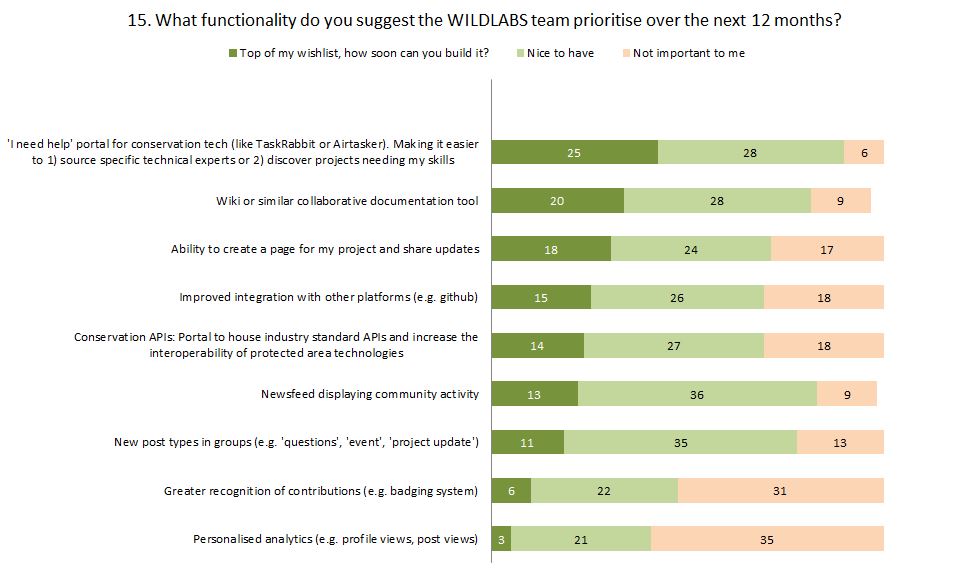
WILDLABS Virtual Meetup: Low Cost, Open-Source Solutions
18 March 2019 12:00am




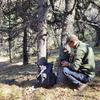





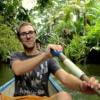




















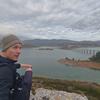


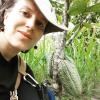

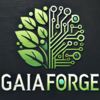



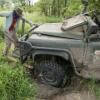
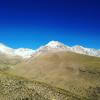









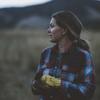
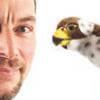
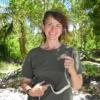
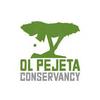




30 August 2019 10:48am
Hi Ricardo,
Thanks for taking the time to respond. I'll look into the electronjs.org option and see if I can get VS through the uni.
If you come across any other drag-and-drop style platforms (preferably free) that you can use to build windows 10 software, it would be great if you can pop me a message on this. Something like what you get when building a website through Wordpress or Wix would be perfect.
Cheers again!